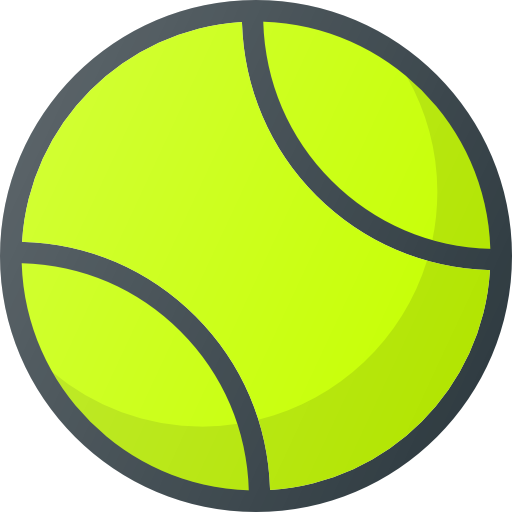A Beginner’s Guide to Choosing a Tennis Racket
Selecting the right tennis racket is a crucial step in a player’s journey, especially for beginners. The right racket can influence your performance on the court, affecting both power and control. This guide will provide an overview of essential factors to consider when choosing a tennis racket, ensuring you make an informed decision that suits your style of play.
Understanding Racket Basics
Tennis rackets are made up of several components, each contributing to the overall performance. Key elements include the frame, strings, grip, and head size. Grasping these components helps players understand how they influence play.
Components of a Tennis Racket
Understanding the different components of a tennis racket is crucial for beginners looking to make an informed choice. Each part of the racket plays a unique role in performance and comfort, which can significantly influence your playing style and overall experience on the court.
| Component | Description |
|---|---|
| Frame | The outer part of the racket; its construction material, such as graphite, aluminum, or a composite, influences weight, flex, and stability. A more rigid frame offers greater power but less control, while a flexible frame provides better touch and feel. For instance, beginner players often benefit from a racket with a larger frame that provides a larger sweet spot, making it easier to hit the ball with precision. |
| Strings | Provide the surface that contacts the ball; string type and tension can significantly affect gameplay. Multifilament strings offer comfort and power, whereas polyester strings provide better durability and spin. String tension also plays a role; lower tension can enhance power and comfort, while higher tension generally allows for more control. It’s similar to driving a car: higher tension offers precision steering, while lower tension provides a softer ride. |
| Grip | The part you hold; important for comfort and control. Grip size is essential—you want to find a grip that feels comfortable in your hand to prevent slipping during play. A grip that’s too small can lead to injuries such as tennis elbow, while one that’s too large can hinder your ability to maneuver the racket effectively. It’s akin to finding the right pair of shoes; the right grip ensures smooth movement and agility. |
| Head Size | The surface area that contacts the ball; larger head sizes offer more power and a larger sweet spot, making it easier to hit successful shots. Smaller heads allow for increased control and precision, making them ideal for advanced players who can consistently hit the ball near the center of the strings. Choosing the right head size can be compared to selecting the right lens for glasses; larger lenses provide a wider field of view, while smaller lenses allow for sharper focus. |
Key Factors to Consider
When selecting a tennis racket, consider the weight, balance, and material, alongside the components previously discussed. These factors affect maneuverability and how the racket feels during play, particularly when performing various strokes. Testing different rackets is essential, as it allows players to discover what feels right for their unique style and body mechanics, ensuring a more enjoyable and confident experience on the court.
1. Skill Level
As a beginner, your skill level plays a vital role in selecting a racket. Many beginners benefit from a racket that combines power and forgiveness. Look for lightweight options that provide a larger head size, as they help in achieving a larger sweet spot — the area on the racket strings that provides the best shot.
2. Head Size
The head size of a racket influences how much power and control it offers. Head sizes are categorized into three types:
- Oversize: 105 square inches and above, providing a larger sweet spot and more forgiveness.
- Midplus: 98 to 104 square inches, striking a balance between power and control.
- Mid: 85 to 97 square inches, offering greater control for advanced players.
3. Weight
Racket weights typically range from 9 to 12 ounces. A lighter racket, usually under 10 ounces, is easier to maneuver and recommended for beginners, while heavier rackets can provide more stability and power. Understanding your comfort level with weight is essential to enhance your playing experience.
4. Balance
The balance of a racket is determined by the weight distribution. Rackets can be head-heavy, head-light, or evenly balanced. A head-heavy racket will provide more stability and power, whereas a head-light option offers more control and maneuverability. Beginners may benefit from a slightly head-light racket to improve handling.
5. Grip Size
The grip size directly affects comfort and control. An improper grip size can lead to straining and affect performance. To find the right grip size, hold the racket and ensure you can fit one finger between your fingers and palm when gripping the racket. Common grip sizes range from 4 inches to 4 ¾ inches.
Testing Rackets
Before making a purchase, it is advisable to test several rackets in a real playing context. Many pro shops and sporting goods stores offer the opportunity to demo rackets. When testing, consider how the racket feels in terms of weight, balance, and overall comfort.
Conclusion
Choosing a tennis racket as a beginner may seem overwhelming, but understanding the key factors—skill level, head size, weight, balance, and grip size—simplifies the process. Emphasizing comfort and control will enhance your overall experience and play. Take your time, test various options, and consult with knowledgeable professionals if needed, ensuring you choose a racket that aligns with your playing style. In the competitive world of tennis, finding the right equipment is a foundational step toward improvement and enjoyment.
